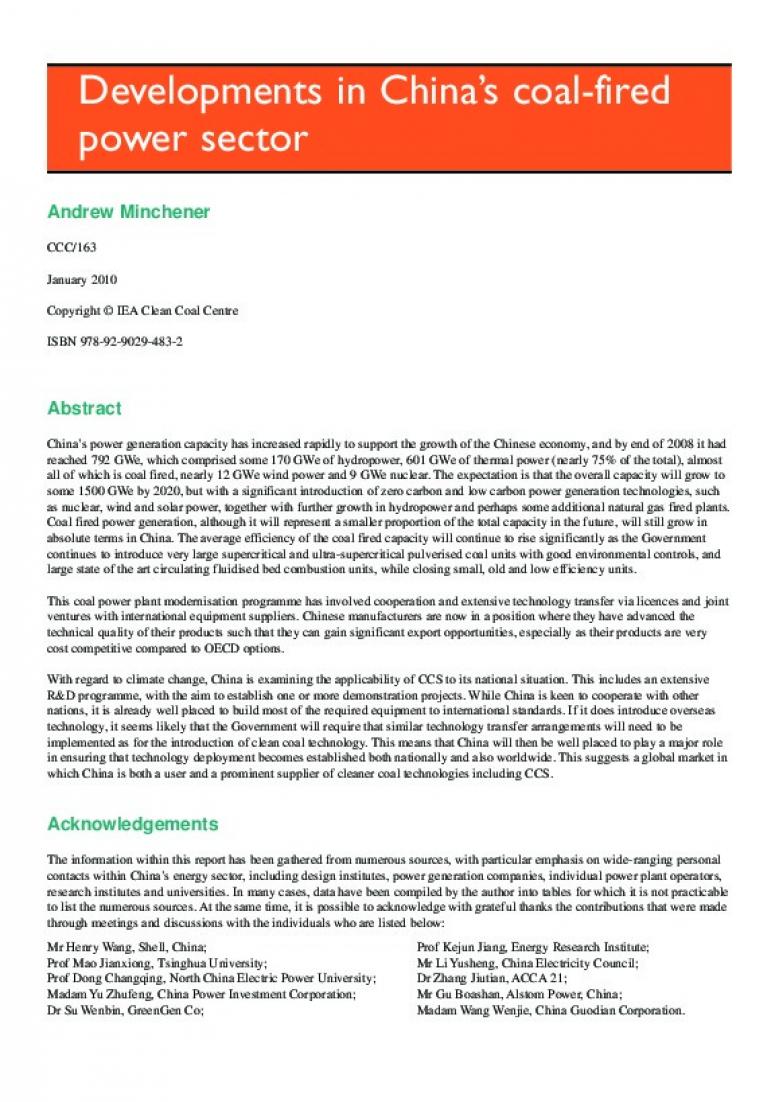Abstract
China’s power generation capacity has increased rapidly to support the growth of the Chinese economy, and by end of 2008 it had reached 792 GWe, which comprised some 170 GWe of hydropower, 601 GWe of thermal power (nearly 75% of the total), almost all of which is coal fired, nearly 12 GWe wind power and 9 GWe nuclear. The expectation is that the overall capacity will grow to some 1500 GWe by 2020, but with a significant introduction of zero carbon and low carbon power generation technologies, such as nuclear, wind and solar power, together with further growth in hydropower and perhaps some additional natural gas fired plants. Coal fired power generation, although it will represent a smaller proportion of the total capacity in the future, will still grow in absolute terms in China. The average efficiency of the coal fired capacity will continue to rise significantly as the Government continues to introduce very large supercritical and ultra-supercritical pulverised coal units with good environmental controls, and large state of the art circulating fluidised bed combustion units, while closing small, old and low efficiency units.
This coal power plant modernisation programme has involved cooperation and extensive technology transfer via licences and joint ventures with international equipment suppliers. Chinese manufacturers are now in a position where they have advanced the technical quality of their products such that they can gain significant export opportunities, especially as their products are very cost competitive compared to OECD options.
With regard to climate change, China is examining the applicability of CCS to its national situation. This includes an extensive R&D programme, with the aim to establish one or more demonstration projects. While China is keen to cooperate with other nations, it is already well placed to build most of the required equipment to international standards. If it does introduce overseas technology, it seems likely that the Government will require that similar technology transfer arrangements will need to be implemented as for the introduction of clean coal technology. This means that China will then be well placed to play a major role in ensuring that technology deployment becomes established both nationally and also worldwide. This suggests a global market in which China is both a user and a prominent supplier of cleaner coal technologies including CCS.
January 2010
| Attachment | Size |
|---|---|
| 561.65 KB |


